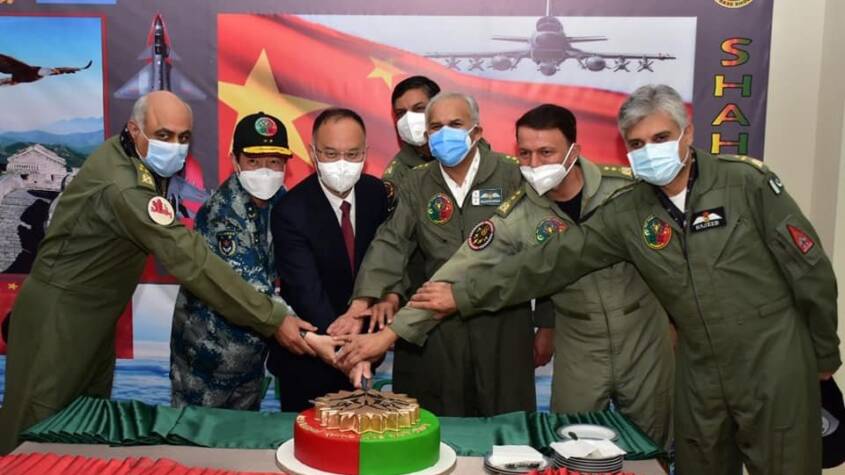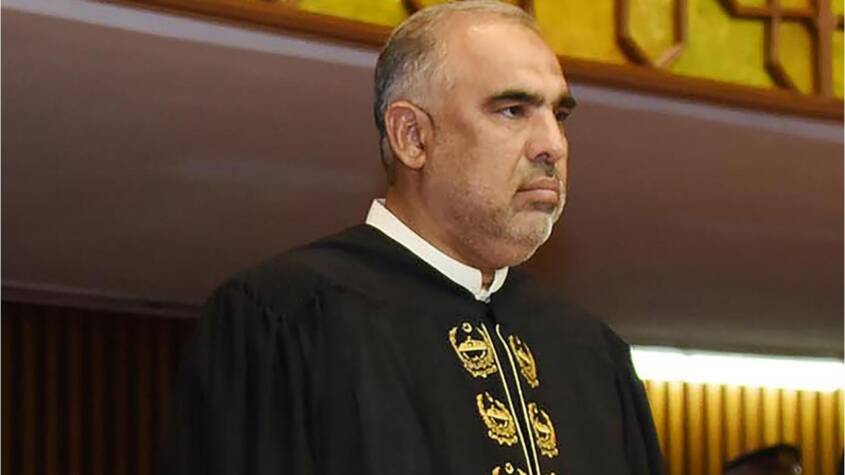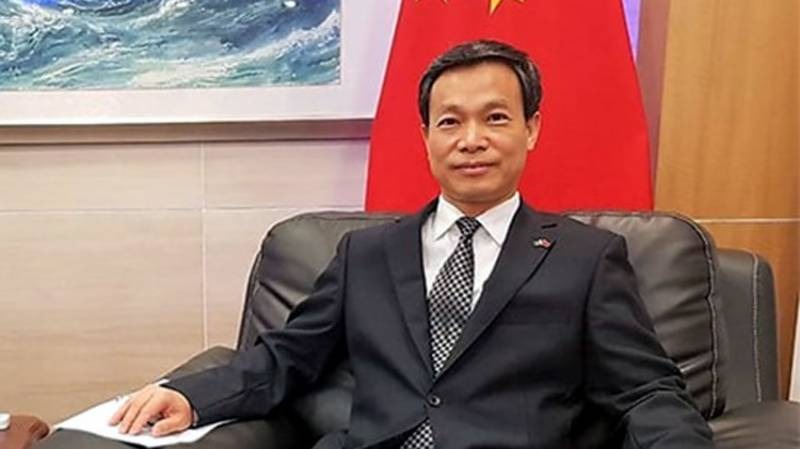Despite the two nations being on the surface, drastically different in terms of political and ideological systems, culture and religious outlook, over the course of 70 years they have nonetheless forged a common friendship as neighbors and post-colonial states whom have found much in common towards addressing various challenges
And finding a way to prosperity in a world whereby the Lion’s share of its wealth, capital and innovation has been dominated by a select handful of countries.
The China-Pakistan partnership is a partnership of Global-South solidarity and a vision for the developing world.
The broadening of this friendship, however, and its centerpiece the China-Pakistan Economic
Corridor (CPEC) nonetheless take place on the background of a changing world, one which has
implications for Islamabad as much as it does Beijing. China faces off against a United States whom
perceives its rise as a growing threat to its longstanding global dominance, and has sought to confront
it on the fronts of trade, technology and ideology.In doing so, it has rallied a number of allies to the
cause and has found growing acquiescence with Modi’s India, enabling and emboldening hardline
Hindutva nationalism in the name of a “free and open Indo-Pacific”- seeking to shift the balance of
power in the region.
In light of this context, partnership with Pakistan is already an alienable aspect of China’s strategic
vision. Connecting to Kashgar and Xinjiang, it provides a route past the subcontinent into the western
Indian ocean and up towards the red sea, of which CPEC aims to consolidate as an alternative
Commodity,energy and commercial passage.
It is no wonder on such an accord that the United States has sought to stir up disruption concerning the Uyghur minority in China’s west, aiming to economically alienate the region and allow the naval and military encirclement of its eastern maritime periphery. The success of this project is subsequently a make or break for Beijing.
Yet, Pakistan is not a proxy, a tool, or a surrogate. What about its own interests and needs? And how
ought these to fit into the equation? China’s vision towards Islamabad must compensate an
increasingly broader spectrum which perceives the country’s entire economic development as a
bonanza for its own national security and well-being, something which ought to go far beyond mere
infrastructure. In a world whereby Beijing is increasingly cornered by the west who wish to preserve
its advantages over the country, along with the souring of ties with New Delhi anointing itself as a
competitor, the establishment of a prosperous Pakistan is imperative to securing its own vision and
buffering its long-term economic options in light of a divided world and the looming threat of
“decoupling”.
We should not just talk about “investment” but also “empowerment”. Whilst China has long
recognized the need to secure stable economic ties with western countries to help propel its own
development, it should not forget that the onus of the Belt and Road initiative is to create new growth
elsewhere, especially outside of the west. In the original Cold War, the United States formulated its
strategy by concentrating its resources and opportunities upon specific countries it supported, as
opposed to solely gearing military might against the Soviet Union, and winning what might be
described “the economic” competition. Whilst the rebuilding of Western Europe under the Marshall
Plan is one such example, more decisive case studies involve how the United States empowered
countries such as South Korea, transforming it from one of the most striking rags to riches stories of
20th century.
We like to imagine contemporary Seoul as an economic, technological and cultural powerhouse, with
leading brands such as Samsung and global appeal. Yet it didn’t start that way, in fact the initial
situation of the Republic of Korea was far more humble and poorer than contemporary Pakistan, with
just a GDP per capita of $158 annually in 1960. Whilst the hard work ethic of the Koreans themselves
must be given due credit, the United States nonetheless enabled South Korea’s own rapid
development through access to three things: 1) technology 2) capital 3) export markets, all of which
allowed the country to herald its rapid industrialisation and transform into a developed nation by the
late 1990s.
In greater detail, the United States spearheaded Korea’s development by granting it access to
technology. Korean students were encouraged to study in American universities and learn advanced
sciences, whilst leading firms such as Samsung and Hyundai were allowed to acquire valuable patents
in the field of engineering and semiconductors. Secondly, capital. South Korea was given access to
lucrative capital markets by US banks which allowed it to invest accordingly. Then thirdly, the United
States provided its own unrivalled consumer base as a market for Korean products allowing exports to
boom. The accumulative result was that Washington spring boarded Seoul into a successful country,
in contrast to the inability of the Soviet Union to do the same thing with neighbouring North Korea
which ended in stagnation and decline.
China must in turn, take this “South Korea” approach to Pakistan and expand its relationship beyond
The politics of CPEC and into an all-encompassing effort to pursue rapid development. Of course,
Pakistan is no South Korea, it is a much larger country with complicated ethno-tribal divisions, of
which has sometimes been prone to instability, but none of that has ultimately stopped a much larger
China, and the lesson of which can be learnt is that prosperity is the greatest prerequisite to stability.
Pakistan must not be written off as a basketcase, it must be viewed and envisioned as one of the
economies and markets of the future. With a population of 216 million, at its potential it will be
equivalent to half the size of the European Union and 2/3 of the United States.
Therefore, in addition to CPEC, Chinese companies should be seeking out to establish new joint
ventures with Pakistani ones, particularly in the field of technology and digital economy, reorienting
The damage Modi’s indiscriminate bans have caused towards a new market. China should be
increasing the number of scholarships and international students sponsored from Pakistan, equipping
them with scientific skills and knowledge, whilst simultaneously investing in local universities and
education centres in the bid to secure the knowledge and technology “Of the future” as opposed to the
increasingly tumulus links with the west and should look to give priority to Pakistan made products in
Chinese domestic markets. Likewise, Pakistan’s own youthful population will be increasingly
Important to China concerning manufacturing and labour support as China’s ages.
Ultimately, it is time to elevate China-Pakistan ties to a new level. The “iron-brother” relationship
must evolve from a symbolism of global-south-south solidarity into a practical vision of a new
economic transformation to secure long lasting prosperity and security, CPEC is merely the spine as
to which the rest of the body must be built around. You cannot go without it, but nor is it relevant on
Its own.
China has succeeded and continues to succeed in transforming itself from what was a poor,
Agrarian country into the world’s 2nd largest, and soon to be largest, economy. If they can, so can
Pakistan.
















